
Pest Library
A Guide To Common Pest Identification In Dallas, TX
When pests get into your home or business, it helps to know what you’re dealing with. Our pest library provides helpful information about the pests that most commonly invade properties in the Dallas/Fort Worth area.Ants
Ants
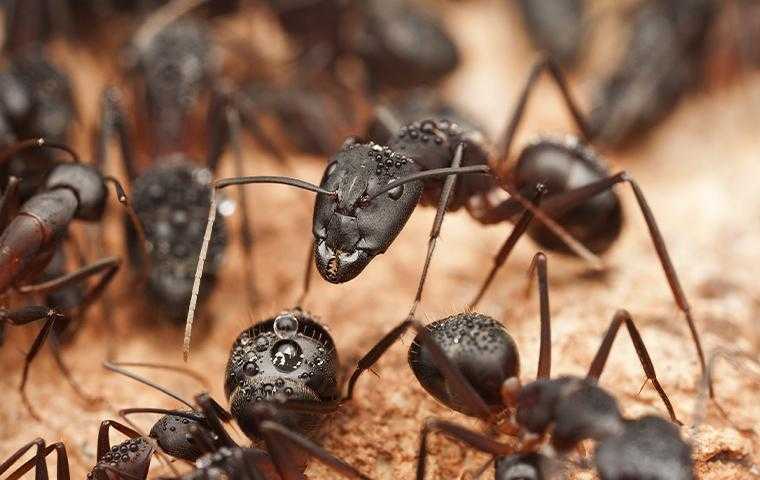
Ants are insects with three defined body parts, thin waists, antennae, and chewing mouthparts. All ants may look similar in appearance, but depending on their species, they vary in color, behavior, aggressiveness, and nesting preferences. In our area of Dallas, Texas, many species of ants find their way into our yards and homes, including fire ants, pharaoh ants, carpenter ants, crazy ants, little black ants, odorous house ants, and acrobat ants. Ants are social insects that live together in colonies; queens and fertile males are the only members of the colony that have wings. You'll often see ants wandering around our yards, gardens, driveways, and porches. They are also regularly seen inside our homes in kitchens, bathrooms, and pantries.
While ants are mostly nuisance pests, some species can be dangerous to people and our properties. Fire ants are very aggressive and deliver painful bites and stings and are hazardous when they decide to nest in our yards. Carpenter ants are considered dangerous, not because of health risks but because of the damage they do by nesting within structural wood. Pharaoh ants spread diseases that can make people very ill. They are a common threat inside of hospitals and other healthcare facilities. Their high moisture needs cause them to invade IV bags and patient wounds. Keeping any species of ant at bay is important. They all contaminate food and surfaces with the bacteria they pick up on their legs and bodies.
Controlling ants on your own is difficult because they invade in large numbers and create multiples nesting sites. If ants have become a problem on your property, it is best to contact a pest professional.
Easy-to-implement ant prevention tips: Most ants find their way onto properties while foraging for food. Get rid of their access to food sources by placing trash in containers with tight-fitting lids. It is also a good idea to pick up uneaten pet food, keep lids on compost bins, and keep outdoor eating areas clean of leftover food. Limit the areas ants have to nest on your property by getting rid of fallen trees, tree stumps, excess woodpiles, and leaf piles. Also, ants are attracted to areas of moisture. Limit excess moisture in and around your home by fixing leaky pipes, using dehumidifiers, and making sure gutters are in good working order. It is also helpful to cut back shrubs to let the sun help dry out the soil. Prevent ants from moving into your home by sealing cracks in the foundation, placing door sweeps on exterior doors, and replacing damaged roof shingles, siding or screens.
Bed Bugs
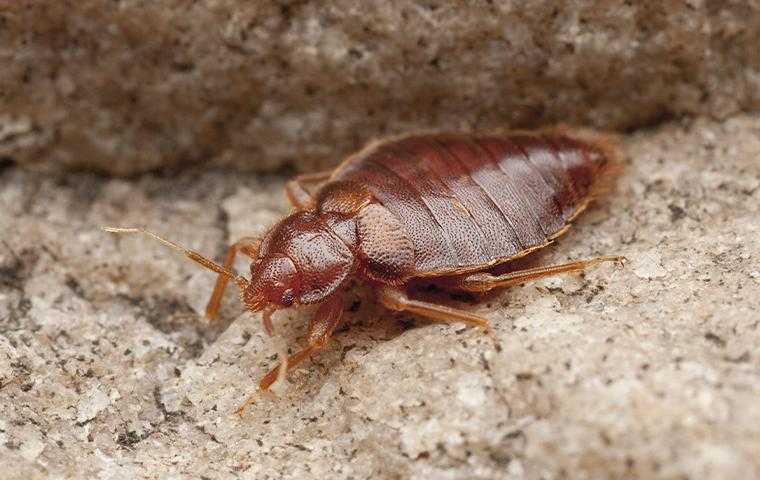
Bed bugs are pests that no home or business owner wants to face. Bed bugs have oval-shaped, apple-seed-like bodies with six legs, two antennae, and no wing. They use their mouthparts to pierce the skin of their hosts and feed on their blood. These pests have flat bodies, and can squeeze into tight cracks and crevices in our homes to stay out of sight. These nocturnal insects emerge at night to feed, attracted by their hosts' body heat and the carbon dioxide that is produced by the breathing process. They feed without waking their food source, then move their now swollen body out of sight until they are ready for their next meal. The bed bug's favorite hosts are people, but if we are not available, they will also feed on our pets or other animals, such as rodents.
Since bed bugs do prefer to feed on people, it is only natural that they live where we live or spend time. Any home or public place could become victim to a bed bug infestation. Common areas where people come into contact with these hitchhikers include airports, hotels, cruise ships, movie theaters, libraries, shopping centers, schools, or even a friend's home. After you come into contact with bed bugs and they crawl onto your clothing or personal belongings, you then introduce bed bugs into your home. When they end up in an apartment building, they can move from unit to unit through floors and walls. Once inside your home, their common hiding spots include in areas of clutter, the seams of mattresses and box springs, behind wood trim, behind baseboards, in electrical outlets, and keyboards or electronics.
If you ever suspect bed bugs are in your home or business, immediately call a professional for help. Professionals have the experience, products, and knowledge needed to eliminate bed bugs and prevent them from returning!
Easy-to-implement bed bug prevention tips: When out and about or while at work or in school, always keep your personal belongings like coats, bags, and purses up off of the floor, and away from other people's belongings. Always inspect a hotel or rental space for signs of bed bugs, and upon returning home, wash and dry all clothing on the highest heat setting the fabric can handle. If possible, avoid purchasing used mattresses, box springs, or furniture for use in your home. When washing and drying clothes at a laundry mat, always bring your own laundry baskets, and once the laundry is dry, immediately take it home to fold. Reduce hiding spot for bed bugs in your house by placing bed bug-proof covers on mattresses and box springs and get rid of as much clutter from your home as possible.
Cockroaches
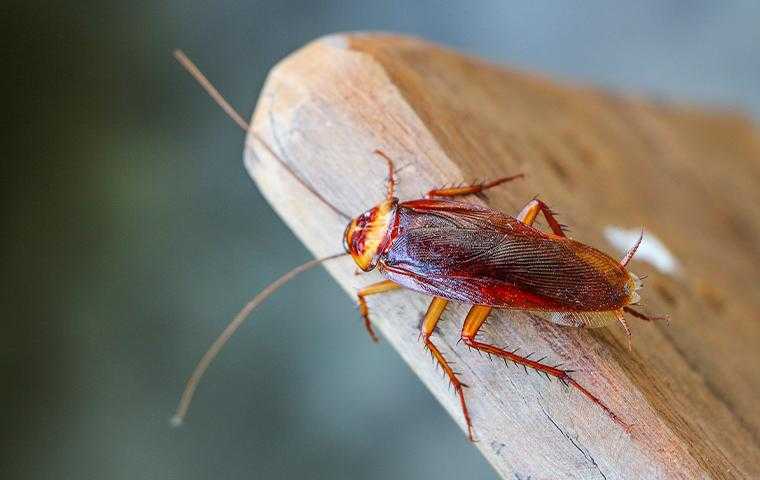
Many identify cockroaches by their oval-shaped bodies. Some have fully developed wings, while others do not. They vary in color, but most are black, brown, tan, or reddish-brown, and some have other markings on their bodies. Their heads are small, compared to the rest of the body, and covered by a shield-like structure. Two long antennae that are the length of or longer than the body is another identifying feature. The German cockroach, American cockroach, brown-banded cockroach, and oriental cockroach are all examples of roaches that often find their way into our Dallas, Texas homes and businesses.
Most of the 4,000 species of cockroaches that live around the world do not live near people and cause us no problems, but the small handful of cockroaches that have learned to live with people have become a big problem for us! Roaches spread diseases and parasites, contaminate food, trigger allergies, and cause asthma attacks in some people – especially young kids. Cockroaches are dangerous pests that have no business living inside of any residential or commercial property. Cockroaches are attracted to properties by outdoor trash cans, our pet's food bowls, or crumbs in the kitchen! Roaches move into a structure on their own through spaces they in exterior walls, or they hitchhike inside on things like used furniture, appliances, electronics, potted plants, or deliveries.
With so many ways to enter your house, keeping cockroaches out is a frustrating task; the best way to control and eliminate them is with the help of a professional.
Easy-to-implement cockroach prevention tips: Maintain high sanitation habits in and around your home. Wash dishes daily and regularly vacuum, mop, and wipe down counters. Pick up uneaten pet food every evening. Make sure to remove trash from your home daily and place it in outdoor trash cans with tight lids. If possible, limit eating to the kitchen or dining areas of your home. Fix any entry points into your home that roaches can get in through. Seal up cracks in the foundation, repair damage to siding or roof shingles, use expanding foam to seal gaps around wires and pipes, install door sweeps, and place covers over open vents or drains. Always inspect any furniture, appliances, potted plants, and packages for cockroaches before bringing them into your home.
Fleas
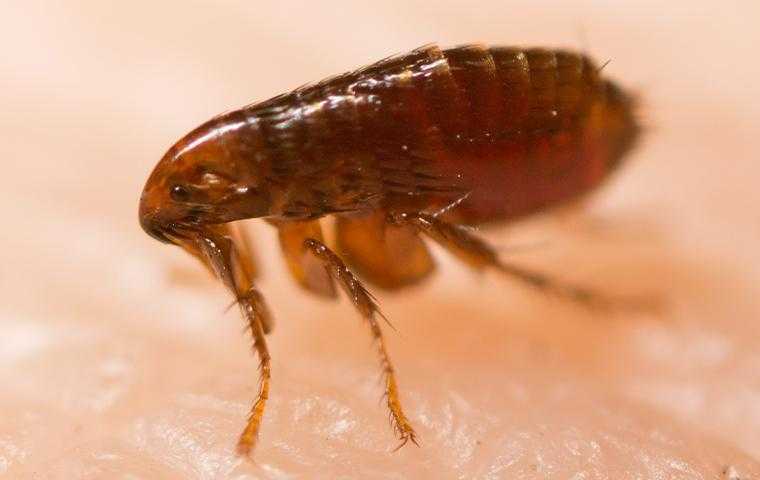
Fleas survive by feeding on the blood of warm-blooded animals. While their preferred hosts are rodents, dogs, cats, and wild animals, if people are available, they will also feed on our blood. Fleas, though only the size of a speck of dirt, are challenging to get rid of from any property. Their hard, flat bodies make it almost impossible to squish them, and their ability to jump quickly makes them even harder to catch. Fleas are wingless, reddish-brown insects; adults have six legs, small antennae. Their flat bodies and spine-covered legs help them to move through the fur of an animal with ease.
Fleas are often associated with pet owners, but in reality, any yard or home can succumb to these tiny terrors. These tiny insects are most often introduced onto properties by wild animals or wandering pets. Once in your yard, fleas can find their way into your home by jumping onto you, your kids, or your pets. These insects can also find their way inside on the backs of rodents that have moved indoors to nest. Outside, fleas are found either on the body of a furry host or waiting for a host in a dark, damp area, preferring sandy soil. Leaf piles, tall grass, and areas under woodpiles are common hiding spots. In our homes, fleas hide in cracks in flood, behind baseboards, in pet bedding, in upholstered clothing, and your bedding.
Fleas are prolific breeders, and a large infestation can develop very quickly. The best way to eliminate these biting insects from your home and yard is with the help of an experienced professional.
Easy-to-implement flea prevention tips: One of the best things you can do to deter fleas is first to discourage rodents and other wild animals that are likely to introduce them into your yard. Remove bird feeders, pick up uneaten pet food, and keep tight-fitting lids on trash cans. If you own pets, the next best step you can take is to work with their veterinarian to place your pets on a year-round flea preventative. Inside your house, help to limit problems with fleas by regularly vacuuming floors, especially in areas where pets frequent. Speaking of our pets, if possible, it is a good idea to keep them off of furniture and beds. Another step you can take to avoid problems with fleas is to avoid purchasing used furniture or rugs for use inside your home.
Rodents
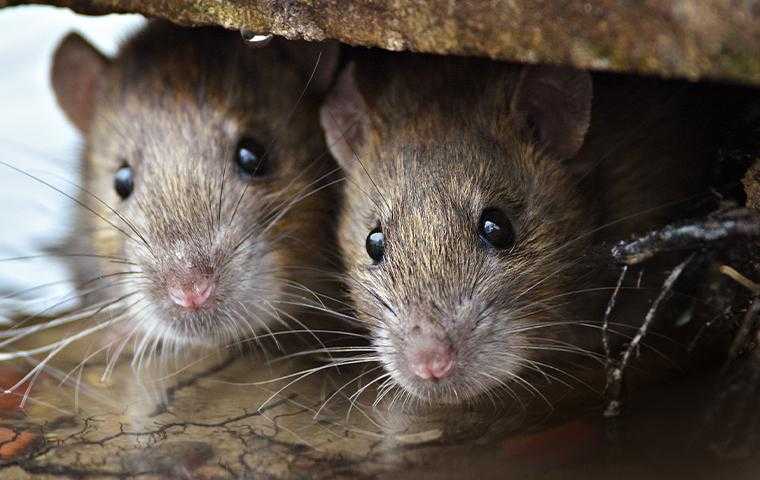
The Norway rat, roof rat, house mouse, and field mouse are all examples of the types of rodents that invade residential and commercial properties in Texas. Many species of rodents have learned to use our yards, homes, and businesses as a place to feed, nest, and have their water needs met. Rodents are not only a nuisance, but they are, in fact, dangerous. They cause a variety of problems, including chewing through wires and causing electrical shorts, contaminating food and surfaces with their saliva and excrement, spreading diseases, bacteria, and parasites, and creating an unpleasant musty odor. Keeping rodents out of your home is vital in order to maintain your health and safety.
Rodents live outside in places that are close to our homes, such as wooded areas, meadows, fields, and parks. When they discover our yards, they will seek shelter in woodpiles, trees, dense vegetation, fallen trees, tree stumps, and gardens. As rodents move around our properties foraging for food, it is common for them to find their way into our homes. They may also move inside to escape harsh weather or to overwinter. Inside, rodents like to place their nests close to food sources. Attics, basements, the backs of cabinets, spaces behind appliances, and wall voids are all common nesting sites.
The rodent's persistent nature makes it a difficult pest to control and eliminate; the best way to solve or prevent a rodent problem is to partner with a pest professional.
Easy-to-implement rodent prevention tips: The best way to avoid rodent problems is to stop them from entering your home. Inspect the entire outside of your house, repairing any openings in the walls or foundation that you find. Keep vents and chimney openings covered. Replace damaged weatherstripping and door sweeps. Limit hiding spots near your home by cutting back shrubbery and tall grasses. Place woodpiles up off of the ground and a distance from your home's exterior. Get rid of food sources by keeping lids on trash cans and compost bins. Pick up your pet's uneaten food and remove bird feeders from your property. Inside, store food in the fridge or in containers with tight-fitting lids – not on counters. Limit eating to the kitchen and dining room.
Stinging Insects
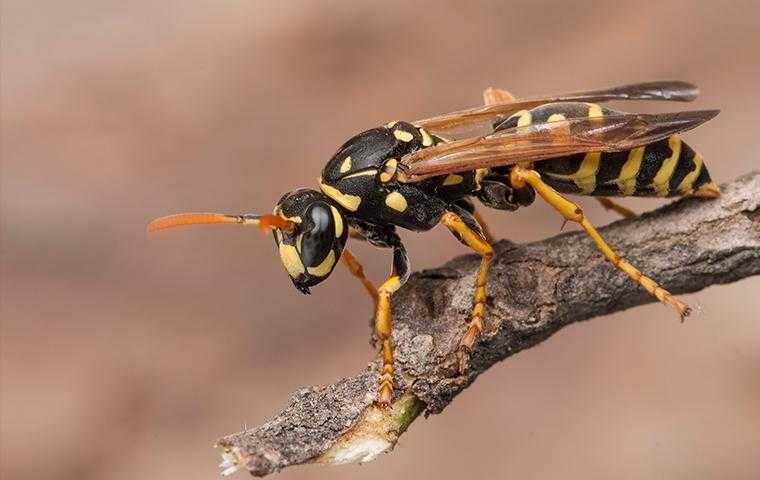
Stinging insects will invite themselves onto any property they deem suitable to build a nest. Common species of stinging insects that invade Texas properties include bees, wasps, yellow jackets, and mud daubers. Stinging insects all have stingers that extend from their abdomens. Most species have a short temper, and won't hesitate to deliver a painful, venom-filled sting to defend themselves or their nests. Having a stinging insect nest in your yard or on your home is stressful. No one wants to have to worry about being stung every time they walk out the door or spend time in their yard!
Many stinging insects feed on nectar; therefore, flowering trees and other landscaping often attract stinging insects to a property. Also, many species of stinging insects are predators and hunt other insects, so yards with a lot of insect activity are also attractive. Yellowjackets and other species will also forage for sweets and meats from our trash or an outdoor eating area. Keeping stinging insects off our properties is difficult because they nest in such a variety of places. Aerial locations include tree cavities, tree branches, utility poles, behind window shutters, under roof eaves, or underneath porch ceilings. Stinging insects that prefer to nest closer to the ground, build their nests under shrubs, inside woodpiles, inside ground holes, or in the abandoned nests of small animals.
If you ever notice stinging insects nesting on your property, it is best to contact a professional. Professional elimination is the safest way to eliminate these pests from your property.
Easy-to-implement stinging insect prevention tips: Cut tree branches, shrubs, and bushes away from your house to keep them from building a nest right next to your home. Place garden areas farther away from the outside of your home. Reduce food sources by limiting the amount of flowing vegetation planted on your property, keep lids on trash cans and recycling bins, keep outdoor eating areas clear of food scraps and sugary liquids. Get rid of water sources by eliminating standing water from gutters, and do not overwater gardens or potted plants. Exclude stinging insects from your home by placing a cap on the chimney, replacing torn screens, and repairing openings in exterior walls.
Termites
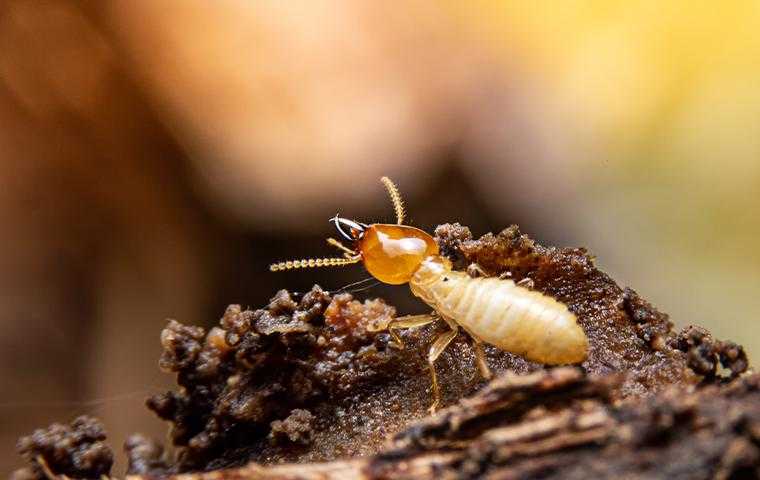
Subterranean termites live in Dallas and across the United States, and are responsible for causing billions of dollars in damages every year; the damage they cause is due to their feeding habits. Termites feed on wood and wooden structures they find in our yards or inside our homes. Out in nature, their feeding habits are helpful, getting rid of decaying wood and plant materials; but when they feed on the wood in or around our homes, they turn into destructive and unwanted pests. Termites are difficult to prevent because they move into our homes unnoticed, either from the ground or aerially (Formosan termites). In fact, we rarely see termites, and the damage they cause is usually extensive before we even know they're there.
Subterranean termites are social and live in large underground colonies. These termites travel under the ground through the soil or in the mud tubes they create above ground to maintain their moisture needs. The most common way for these insects to enter into buildings is through spaces in the foundation or wood making contact with the ground. Formosan termites are a kind of subterranean termite. They are aggressive feeders and live together in vast colonies. This species can cause more damage in a shorter period than other species of termites. They are also able to nest above the ground by building unique carton nests.
Termites are damaging pests, no matter the species. The best way to solve your termite problem and keep them from returning is to partner with a termite control professional in Dallas.
Easy-to-implement termite prevention tips: Moisture attracts termites. Reduce excess moisture in and around your home. Outside, use gutters to direct water away from the foundation, fix leaky outdoor fixture or pipes, and do not overwater yards or gardens. Termites feed on decaying or older pieces of wood or plant materials. Remove potential food sources like old wooden fencing, woodpiles, and leaf piles from your property. Create a barrier between any wood mulch or soil and your foundation. If possible, replace wood mulch with a non-organic option. Inside of your home, lower moisture levels by using dehumidifiers, fixing leaky pipes, and replacing water-damaged wood.
If you are looking for help to get rid of pests from your home or business, contact the Texas pest professionals at Greenforest Termite & Pest Control and schedule home pest control or commercial pest control services today!
Choose Us and Experience the Difference in Pest Control!
Why Greenforest Termite and Pest Control?
-
Integrity in ActionAt every step, we uphold the highest standards of integrity and professionalism. You can count on us to provide honest assessments, transparent communication, and reliable solutions every time.
-
Decades of Expertise
With over 40 years of hands-on experience in the pest control industry, we've honed our craft, mastering effective techniques to tackle any pest problem with precision and efficiency.
-
Your Satisfaction Guarantee
Rest assured with our pest-free guarantee. We stand behind our work, committed to ensuring your satisfaction and providing effective solutions that keep pests at bay, no matter what.
-
Swift Response, Tailored Solutions
When pests invade, time is of the essence. That's why we're committed to prompt responses to every call, ensuring that your pest issues are addressed swiftly and effectively.
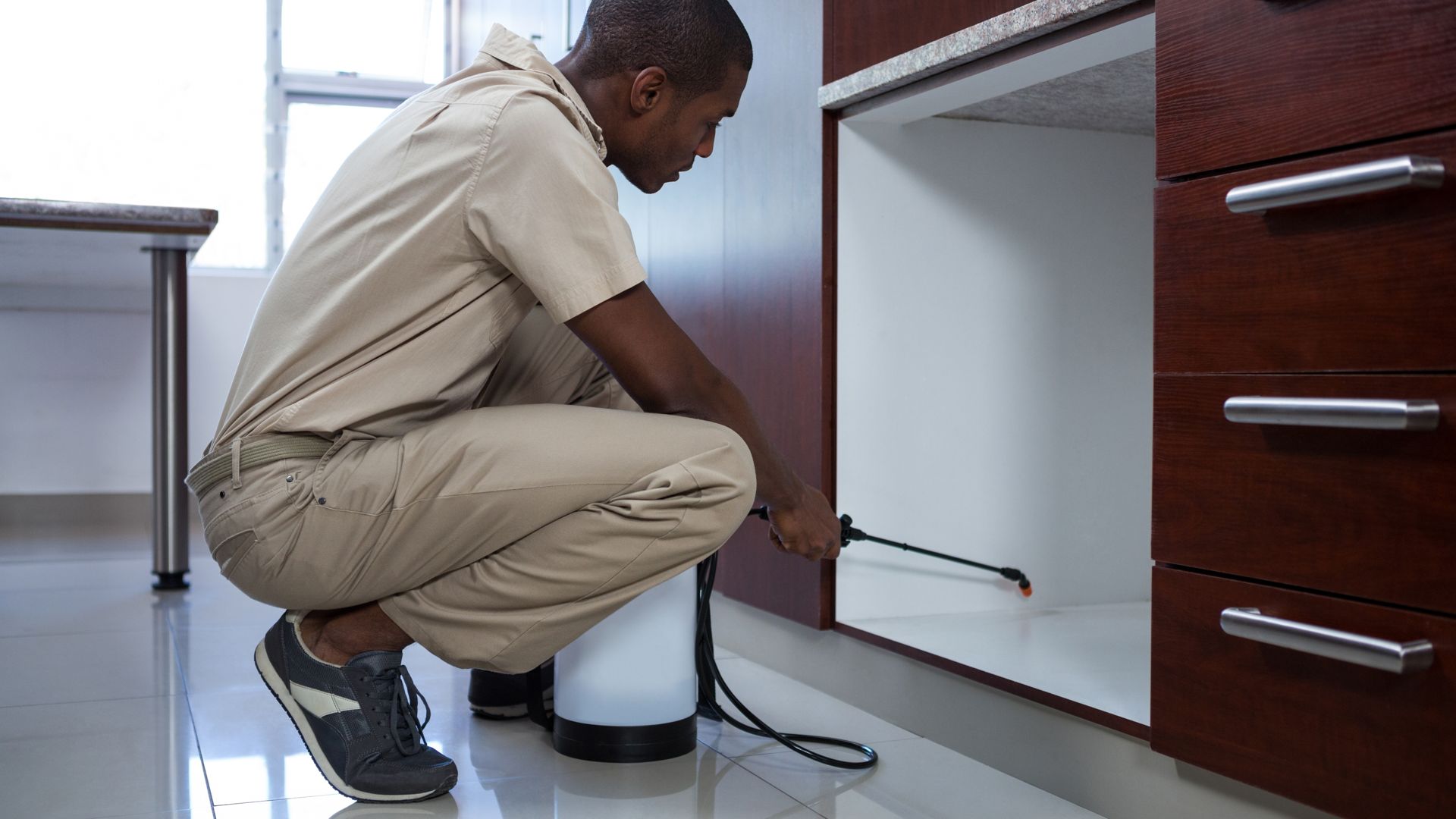
Don't Just Take Our Word for It
Hear From Our Happy Customers
At Greenforest Termite and Pest Control, your satisfaction is our priority! See for yourself what our customers have to say about working with us.
-
"Fast reliable and they will get the job done."
Kinyetta is a great receptionist and will definitely get you the appointment you need! Very professional group of people!
- Brandy T. -
"Very helpful and friendly."
Seems like you’re working with family when you call.
- Donn H. -
"Best pest control company in DFW!"
Best pest control company in DFW, great service and tremendous ownership! They service whole DFW metroplex and go above and beyond with service for a great price!
- Angela T. -
"They are professional, responsive, just overall a great company."
We are in contract with Greenforest at my Apartment Community. The staff are kind and care about your concerns. We don’t have continuous issues once treatment has been completed. Very happy with the service and the team.
- Natasha C. -
"They go above and beyond for their customers!"
We had a rat infestation in our back yard! Greenforest Johnny and John came out and put out bait traps all around our back yard. Within two weeks we started seeing a difference in the rat population!
- Harold B. -
"Highly recommended!"
We just want to say Cristian Trejo is very friendly and he is very informative about servicing our apartments.
- Alex M. -
"Very helpful and kind."
They called me back immediately and were reassuring and informative.
- Eleanor N. -
"Highly recommend Greenforest."
We’ve been using them for about 2 years now, and they are on time, easy to get ahold of, and professional.
- Jen N.